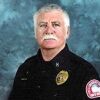Unstable atoms give off energy called radiation in an attempt to stabilize themselves. Low levels of radiation include:
- Ultraviolet rays
- Visible light
- Radio frequencies
- Microwaves
- Infrared
Such low-level radiation accounts for over 80% of the radiation people are exposed to on a daily basis. These examples of non-ionizing radiation are safe to be around and receive little or no identification.
It is ionizing radiation that creates high levels of energy that are a direct threat to first responders and the public at large. Believing that such radiation is a rarity is a critical mistake firefighters cannot make in today’s world. Pharmacies, hospitals, transportation accidents, fires in industrial and chemical centers as well as construction and mining sites are all theaters of radioactivity. Add the ongoing threat of terrorist-inspired dirty bombs, illegal sales, use and transportation of radioactive materials, and a firefighter’s risk of encountering a radioactive source increases.
Four types of radiation
There are four types of radiation, designated in the Greek alphabet.
- Alpha radiation. Alpha radiation is the lowest energy form of radiation, but it can still affect responders if not dealt with properly. Considered a particle because of its mass, weight and inability to travel great distances, Alpha radiation’s ability to penetrate is negligible. Intact skin, paper, and a firefighter’s PPE can serve as external protection. Alpha particles can however be inhaled or ingested, causing cell and organ damage. This threat requires breathing protection in the form of an SCBA or other type of breathing apparatus in addition to full PPE.
- Beta radiation. Beta radiation has smaller particles, but more energy, and can travel further from its source than Alpha radiation. Limited in its penetrating ability, Beta radiation, such as Tritium or Carbon-14 used for dating fossils, can be shielded by thick cardboard, plastic, aluminum, and – like Alpha radiation – full PPE and breathing apparatus is warranted. If unshielded and unprotected, Beta radiation can damage skin and eyes through direct contact. Inhalation or ingestion can cause greater cell and organ damage than Alpha radiation.
- Gamma radiation. Gamma radiation and X-rays used in medical treatments are the most common types of ionizing radiation, and unlike Alpha and Beta, they have no mass. Gamma and X-ray radiation exist as waves of low or high electromagnetic energy able to travel long distances with great penetration. Protection against Gamma radiation consists of lead, thick steel or concrete. Gamma radiation can significantly damage living cells and tissues. Firefighters can distance themselves from the product while shielding behind their fire apparatus. No amount of protective clothing and SCBA equipment can prevent direct contamination from exposure to Gamma radiation.
- Neutron radiation. Neutron radiation, while having no charge of its own, is the only type of ionizing radiation that can make other objects radioactive. Much like Gamma radiation in description, its infective quality separates it from the rest. Like Gamma radiation however, it can travel great distances and penetrate most materials. Rarely found outside a nuclear reactor facility, protection requires concrete and water – materials rich in hydrogen.
Protection from radioactive materials
There are three basic principles of protection when it comes to radioactivity; time, distance and shielding. The less time spent around radioactive material, the less exposure. The farther away from a radioactive source, the safer the responder, and blocking or absorbing radioactive material from reaching a responder is the basis of shielding. Knowing the type of radiation and the appropriate shielding material is paramount to a successful incident response, irrespective of level of training and equipment.
Blending these principles of protection against radioactive exposure allows firefighters to safely respond to a radioactive emergency. ALARA is the acronym for “as low as reasonably achievable” and is used to accurately evaluate the risk/benefit of any potential radiation exposure.
Using sophisticated detection devices, trained responders can determine the level of protection needed for safe and effective intervention. Consider a short time at close distance with a low-grade radioactive product; securing it would be a viable risk to responders. Without adequate protection, a long time at close distance to a highly radioactive source would not.
Hazmat: First on scene
First responders are not initially equipped for a hazmat intervention involving radioactive material. There is no benefit in mitigation, containment or even rescue at the risk of firefighters, medical personnel and law enforcement officers losing their lives in the process.
All firefighters should have awareness level hazmat training and preplan information regarding identified locations of radioactive material within their response area. Even if fire departments are not equipped for a hazmat operation involving radiation, having small dosimeters or personal radiation detectors (PRDs) with an audible warning in the presence of radioactive material is appropriate and cost-effective.
Firefighters, regardless of incident frequency, level of training and response equipment, must be familiar with NFPA 472, Standard for Professional Competence of Responders to Hazardous Materials/Weapons of Mass Destruction Incidents.
A responding fire crew establishes the presence of radioactive material by label, placard, container or early detection devices. Consulting the Emergency Response Guide Book (ERG), the material is isolated to a distance of 75 feet in all directions, responders are staged upwind and uphill, and command calls for a hazardous materials response. For victims exposed or contaminated, personnel must evaluate time, distance and shielding, and isolate accordingly.
Training and proper detection and identification equipment are the keys to effective response to any radioactive threat. The federal government offers free classes, such as Counterterrorism Operations Support Center for Radiological/Nuclear Training in Las Vegas, Nevada; Security and Emergency Response Training Center in Pueblo, Colorado; and Centers for Domestic Preparedness in Anniston, Alabama.













